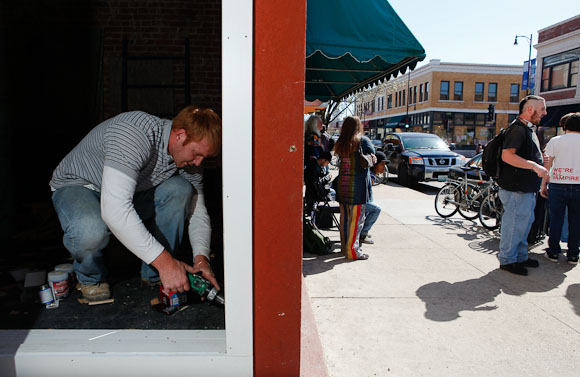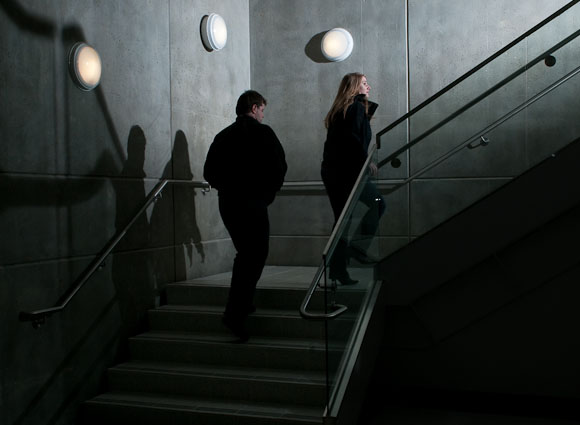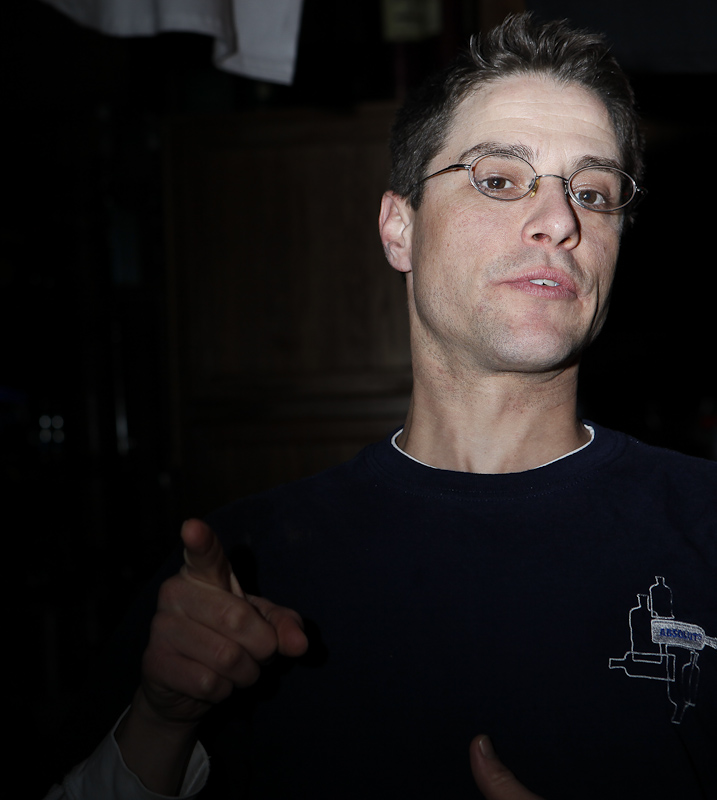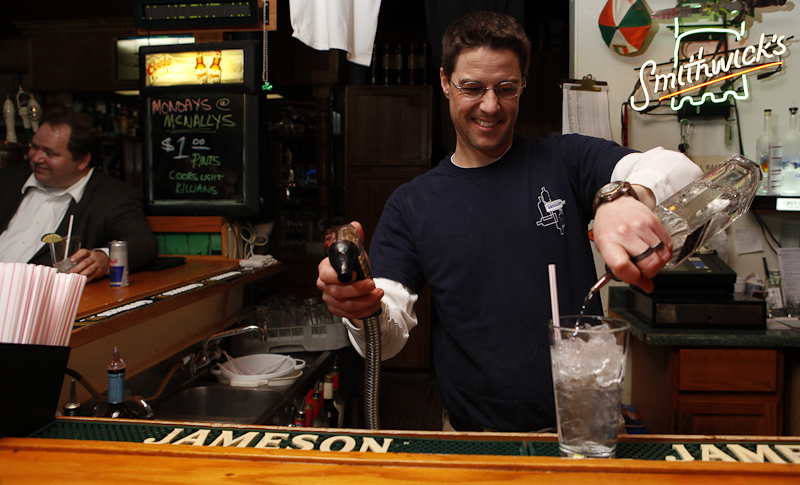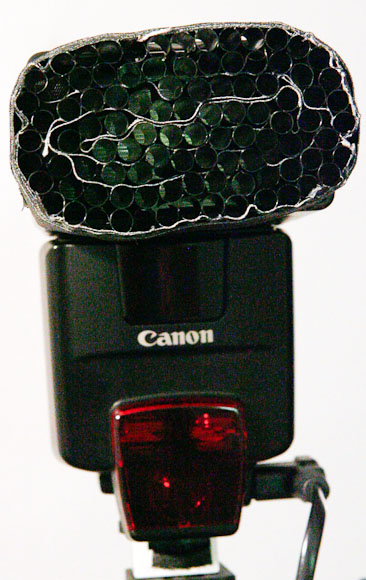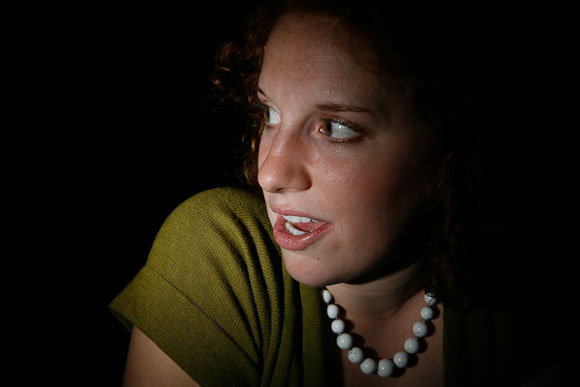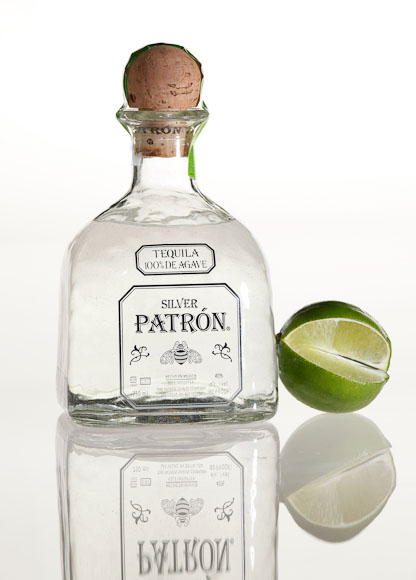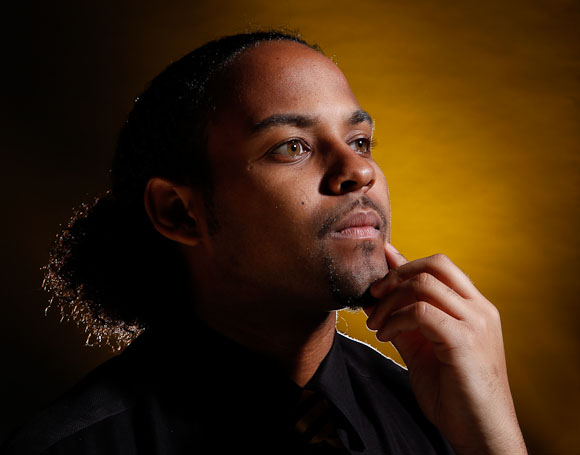Recently I’ve been trying to make photographs of the fighters at the Hulett House, a mixed martial arts training gym run by Rob Hulett and part of the Midwest Fight League, while sparring with each other using at least two flash heads for cross lighting. One of the greatest challenges is to ensure that the light stand (I’m triggering wirelessly either with Canon ST-E2 transmitters of with eBay “poverty wizards”).
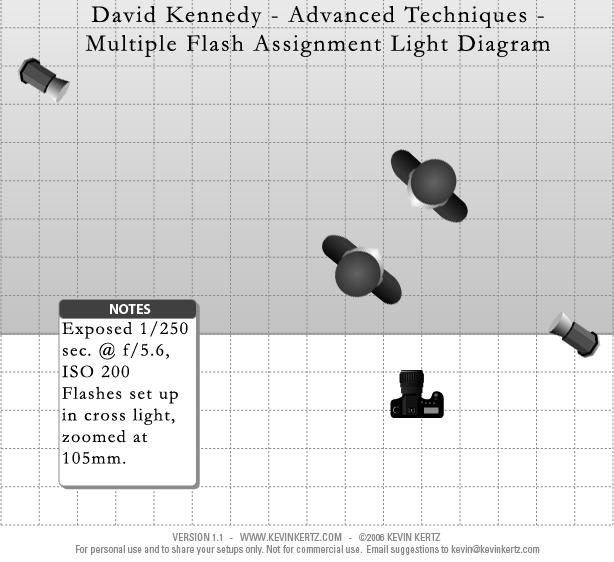
In this case, I’ve lit the scene with two 550EX Speedlites aimed right at one another. I was using daylight white balance because I was letting the flash heads overpower the ambient light, but now I regret that decision and wish I had gone with a CTO gel and tungsten white balance to make the overhead lights appear white. C’est la vie.
Also, the shadow cast by the strobe on the right is a bit distracting. But what made this, to my mind, the strongest of the images was Croom’s expression paired with the position of the bright red boxing glove in the lower right-hand corner.
Without that glove as an anchor for the composition, this wouldn’t be a successful image at all.
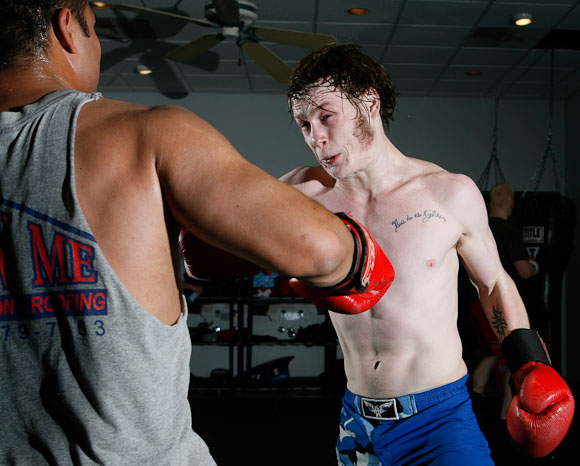
More photos after the jump.
Continue reading “Multiple Flash for Action Events”
